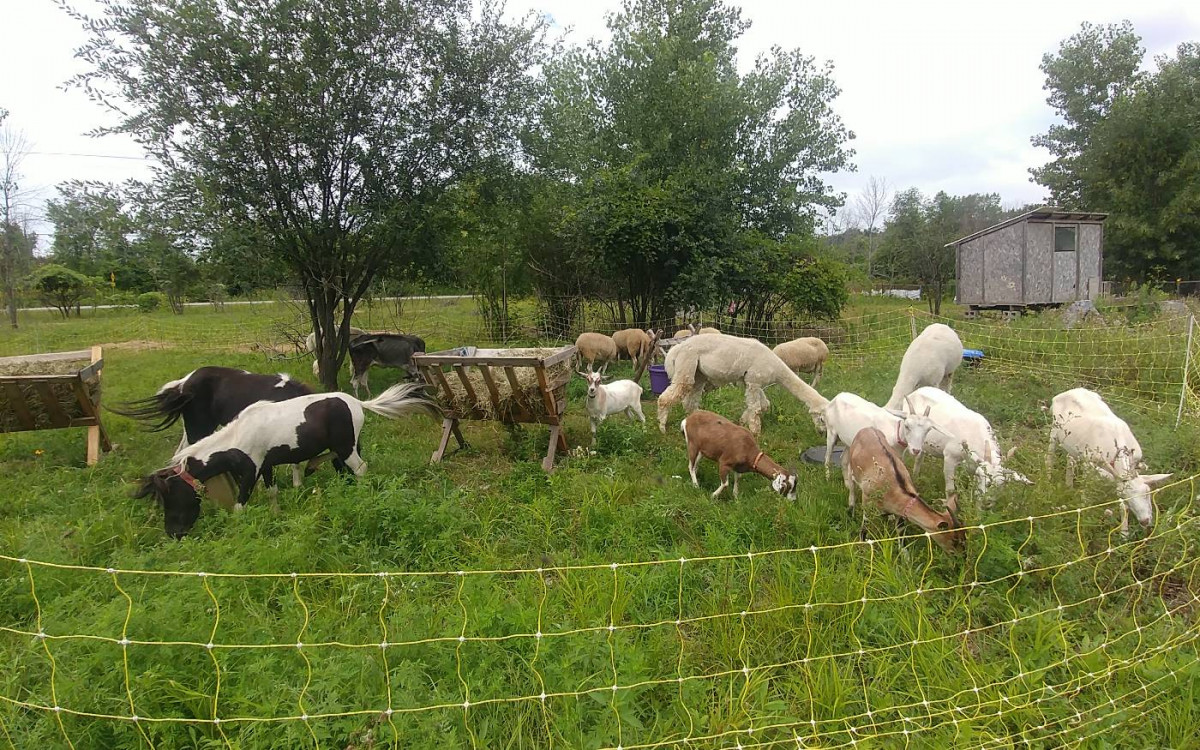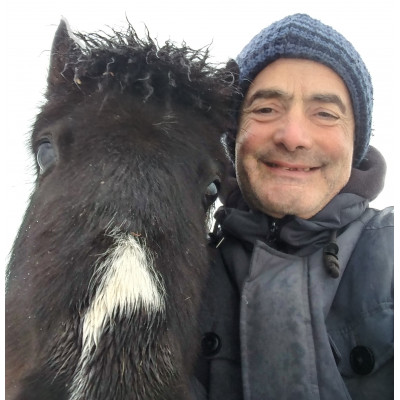During the summer months, our animals mainly eat grass and other vegetation that grows on the farm. Over the past few years, the quality and quantity of the vegetation on the farm has been on a significant decline, which was evidently not good for our animals.
In permaculture we say: the problem is the solution. We use what bothers us in a constructive way, mimicking nature.
This year we launched a new concept called regenerative grazing. We were inspired by another farm in Quebec called “Grazing Days”, which has been applying this concept to their beef herds for many years.
Regenerative grazing - what is it?
Regenerative grazing refers to pasturing high density herds of herbivorous animals in small areas for short intervals of time.
In fact, herbivorous animals naturally tend to stay together for better protection against predators. They move from one area to the next in large herds. By staying on their tail (pun intended!), predators thus force the animals into tight herds.
Diversity is a key element here. First, it allows for efficient consumption of vegetation amongst animals: while grazing, different species of animals eat different plants or different parts of the same plant. Likewise, diversity brings out different strengths in each animal: some herbivores have better vision, others have better hearing or sense of smell; some are more alert, others are strong or fast. It becomes hard for predators to take a mixed herd by surprise or by brute force. Lastly, once the herd leaves a particular area that is now devoid of accessible vegetation to them, the manure and urine (fertilizer) they leave behind, as well as the clearing of that area, allows new vegetation to grow more vigorously and densely, with renewed plant diversity.
This is what is still happening in Africa today where the last big herds of wild animals exist (for example, in the Serengeti). The same thing happened in Canada about 15,000 years ago, during the Pleistocene epoch.
There are several projects in the world called Pleistocene Rewilding. Our very own Project PACE farm can be considered one of them at the smallest possible scale.
We use an electric fence to keep the animals in a tight herd. We move the fence every day. We have just started this year, but we are already seeing some good results. Animals love to be in a mixed herd. Every morning they happily run to their enclosure, and when evening comes, return to their barns. The quality and quantity of vegetation has increased compared to last year, but we still need to give a bit of hay to the animals to compensate for the lack of vegetation. If all goes well, then in a few years hay will not be needed in the summer!
We also expect to improve the quality of our soil, which can let us start other interesting projects like agro-pastoralism, food forests, rice paddies, vegetable gardens, etc!
.png)

